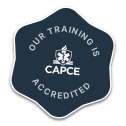
The NREMT is considering a resolution (22-13 to be exact) that would present a national change to education standards for EMS professionals.
Beginning in 2013, the NREMT (or National Registry of EMTs) began requiring that “[…] candidates for Paramedic certification demonstrate successful completion of a CAAHEP-accredited Paramedic education program (or an education program that has been issued a CoAEMSP “Letter of Review”) that meets or exceeds the National Emergency Medical Services Education Standards for Paramedic.”
This decision was bold and some believed it would pave a way for paramedics to be true clinicians. In simple terms, this raised the education standards for paramedics across the nation, and set a precedence for paramedics to be clinical providers rather than ‘traveling first-aid stations’ and ‘ambulance drivers.’
has been awarded CAAHEP accreditation, or
has been issued a CoAEMSP “Letter of Review,” or
has received state EMS office approval.”
What exactly does this mean for programs now? While accredited programs will essentially remain untouched (for the time being at least), it allows any program that has received approval from the state EMS office to certify paramedics who may then sit for the NREMT exam.
So what does this mean for the future of EMS? We cannot say definitively. But here is what we do know:
Achieving accreditation for paramedic programs through the CoAEMSP is no easy feat, in fact, it is costly, time-consuming, and requires ongoing evaluation… or at least it is supposed to. While these are not necessarily bad things, the financial component has meant small programs that cannot afford accreditation have been shut down. As a result, paramedic programs are now hours apart in many states, making education opportunities limited for many potential providers.
While we recognize the concern many are voicing with the possibility of handing the responsibility of program regulation over to the states (which we will discuss shortly), we are not quick to ignore what the accreditation requirements have meant for programs across the nation. We also recognize that for a wide variety of other reasons, a lack of programs has contributed to challenges in the recruitment of paramedic providers for both private and fire-based EMS.
What exactly are these concerns though? So far this sounds like it could be great for the EMS world, right?
There is really no argument that in the past decade, the depth and quality and knowledge required of providers has improved leaps and bounds. Because of these improved standards, trust between physicians and paramedic providers has deepened nationwide, allowing increased autonomy and freedom to think critically. The accreditation process is partly to thank for this. Therefore, we are in total support of all paramedic programs having high educational standards with ongoing evaluation and rigid requirements. We believe in paramedics taking responsibility for their skills and education, and recognize that in this environment both patients and in-hospital providers have benefited.
Thus, the loudest argument in opposition to the proposed change is that handing this responsibility over to the state will not only halt progression but actually regress education standards. Essentially, it boils down to a fear of a breakdown in the so delicately and intentionally built trust that has been tenderly cared for and fostered between paramedics and physicians in the previous decade.
We see that. We hear that. We in no way want paramedics to be seen as anything less than competent clinicians.
There are lots of questions floating around on the internet about accrediting bodies in general. As a CAPCE accredited provider of EMS continuing education, we see firsthand what having a strong and supportive overseeing body can do for an organization. Can Educational institutions say the same of the CAAHEP and CoAEMSP? Have CAAHEP and CoAEMSP lived up to the expectations our industry has expected from them? Have they raised the bar without adding unnecessary red tape to improving EMS education? So, the question we ask is this, “Will this change actually lower the standard for paramedic education programs?”
Despite the widespread, legitimate concern, we do not see evidence to support this.
We hope placing this responsibility in the hands of the states will do two things:
Allow more programs to offer high-quality paramedic education, in turn increasing the number of nationally certified paramedics seeking employment.
Increase oversight on existing programs by reducing the burden on one governing body, and allow states to implement programs that measure program success based on provider competency.
Lastly, something else we feel is important to discuss as we look at EMS education and the profession as a whole. Let’s not forget that there is another reason EMS is suffering. When we honestly ask ourselves “Why are we struggling to employ field providers?” The answer is quite simple. Likely for the same reason, most of the healthcare industry is struggling. Limited pay for a demanding, risky, mentally and physically taxing career. So perhaps we should evaluate this argument from all sides and delve into the systemic changes EMS needs to undergo in order to once again pique the interest of potential employees. We believe supporting both current and future providers as they attain ever-expanding levels of skill and knowledge, regardless of the size of the program attended, while simultaneously supporting their mental and physical health may work to improve both the quality and quantity of providers.
- Dozens of courses and topics
- State-specific requirements
- We report to CAPCE in real time


